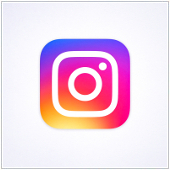Facebook is no longer the most popular social media platform for US teens. According to a recent survey by Pew Research Center, only 51% of US teens aged 13 to 17 years are using Facebook. This is much lower than the shares for US teenage Snapchat users (69%), Instagram users (72%), and YouTube users (85%).
Reasons for user demographic shift
The same survey found that only 10% of US teens use Facebook most frequently, unlike other platforms like Instagram (15%), YouTube (32%), and Snapchat (35%). There are two main reasons why Facebook is no longer the first social media choice for US teenagers: visual content and control.
#1. Visual Content
The current youth demographic group favors visually appealing posts. As a result, teens prefer platforms like Instagram and Snapchat that allow them to beautify their photos and instantly share them with their friends. This is unlike Facebook where users can only upload, share, read, and like curated posts, which is deemed “uncool” by teenagers.
#2. Control
Youngsters are known to be highly expressive, but this is impossible to do if they’re friends with their mom, dad, or other adults on social media. Snapchat and Instagram solve this by allowing teens to control who’s able to see their posts. What’s more, Snapchat and Instagram stories allow users to send time-limited messages. Unlike regular Instagram posts, Instagram stories allow users to share images or videos on their app immediately. These images and videos will then be removed from the platform after 24 hours, similar to how Snapchat works.
These two features mean users can upload more “adult-oriented” posts without worrying that their parents will see them. Users can also get peace of mind knowing their uploaded photos or videos will be removed from the app after a period of time (usually 24 hours).
The next steps for SMB marketing
It’s crucial for small- and medium-sized businesses (SMBs) that have a limited marketing budget to understand which platforms reach which demographics. For example, SMBs targeting customers aged 13 to 17 years should rethink their marketing strategies if they’ve invested mainly in Facebook ads. They should consider reallocating their advertising funds to Snapchat, Instagram, or YouTube where their target customers are most active.
Is this the end for Facebook ads?
This doesn’t mean companies that have invested in Facebook marketing won’t see any more benefits. The survey discovered that 70% of US teens from lower-income households use Facebook, a much higher figure than those from middle income families or wealthy families.
But if you do decide to move your Facebook ad spending to other platforms, keep in mind the different preferences based on gender. More girls (42%) identified Snapchat as their go-to platform compared with boys (29%). On the other hand, more boys (39%) identified YouTube as the platform they used most frequently compared with girls (25%).
It is highly recommended that businesses of any size use more than one type of marketing channel to attract customers. Not only will your company’s search engine rankings increase naturally, but having more than one approach can also help you reach more of your target demographics and compete better with similar companies. We help SMBs make the best of their marketing funds by tailoring marketing strategies that reach the most teenagers, so if you’re interested in social media marketing, send us a message today.



 Have you decided to build up your web presence and attract new customers using social media? Here are five tips on how small- and medium-sized businesses (SMBs) can turn likes into dollars.
Have you decided to build up your web presence and attract new customers using social media? Here are five tips on how small- and medium-sized businesses (SMBs) can turn likes into dollars.
 With the tug-of-war between mammoth social media platforms for daily users, 2018 is poised to become the biggest year for technological advancements in the industry. As social norms related to social media change, here are the top 5 trends we expect to become mainstream this year.
With the tug-of-war between mammoth social media platforms for daily users, 2018 is poised to become the biggest year for technological advancements in the industry. As social norms related to social media change, here are the top 5 trends we expect to become mainstream this year.
 Facebook might be the biggest name in social media, but that doesn’t mean it’s the only one. Since there isn’t a one-size-fits-all platform, there are trendier options such as Instagram and Snapchat, with a burgeoning millennial base to choose from. With that in mind, it’s essential for business owners to understand the pros and cons of each platform before settling on one.
Facebook might be the biggest name in social media, but that doesn’t mean it’s the only one. Since there isn’t a one-size-fits-all platform, there are trendier options such as Instagram and Snapchat, with a burgeoning millennial base to choose from. With that in mind, it’s essential for business owners to understand the pros and cons of each platform before settling on one.
 Scroll, double-tap, repeat, might have been the original Instagram-ing routine, but not anymore. After partnering with global advertising giants, IG is introducing its latest feature: Stories. With it, you can share short videos, or even personally decorated snapshots of your daily life. But many of you might ask, “What does this have to do with online marketing?” Read on and find out.
Scroll, double-tap, repeat, might have been the original Instagram-ing routine, but not anymore. After partnering with global advertising giants, IG is introducing its latest feature: Stories. With it, you can share short videos, or even personally decorated snapshots of your daily life. But many of you might ask, “What does this have to do with online marketing?” Read on and find out.
 Because of its image-heavy content, Instagram has become a tremendously popular social platform, as evidenced by its 500 million users and over-a-billion daily engagement. More than being a photo-sharing social network with fun filters, Instagram’s potential to turn your followers into customers is worth exploring. Make the most of your Instagram account with these 5 practical tips.
Because of its image-heavy content, Instagram has become a tremendously popular social platform, as evidenced by its 500 million users and over-a-billion daily engagement. More than being a photo-sharing social network with fun filters, Instagram’s potential to turn your followers into customers is worth exploring. Make the most of your Instagram account with these 5 practical tips.
 It’s astounding how celebrities manage to amass millions of followers and gain thousands of likes for posting a photo of their shadow. Companies of all sizes would go crazy for that kind of exposure, but rarely do their wishes get granted. But not all hope is lost, start small and take baby steps with the help of Instagram’s recently-announced tools that help make the process of establishing your company’s presence an easier one:
It’s astounding how celebrities manage to amass millions of followers and gain thousands of likes for posting a photo of their shadow. Companies of all sizes would go crazy for that kind of exposure, but rarely do their wishes get granted. But not all hope is lost, start small and take baby steps with the help of Instagram’s recently-announced tools that help make the process of establishing your company’s presence an easier one: